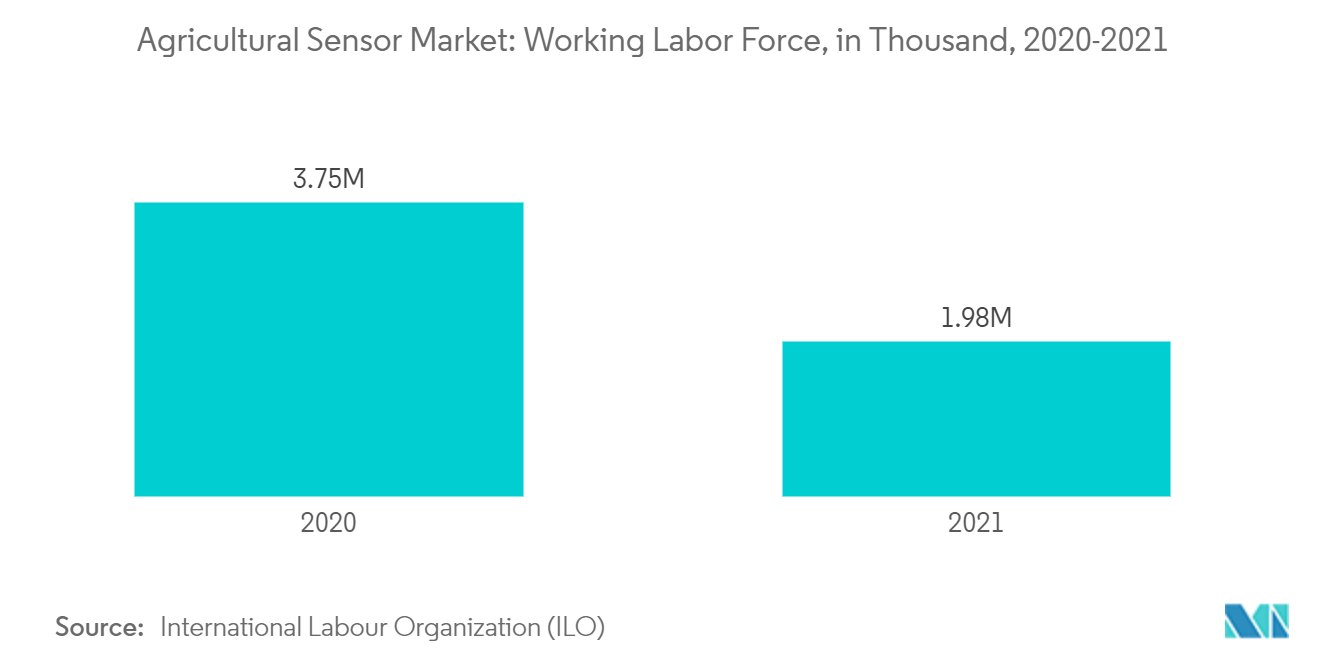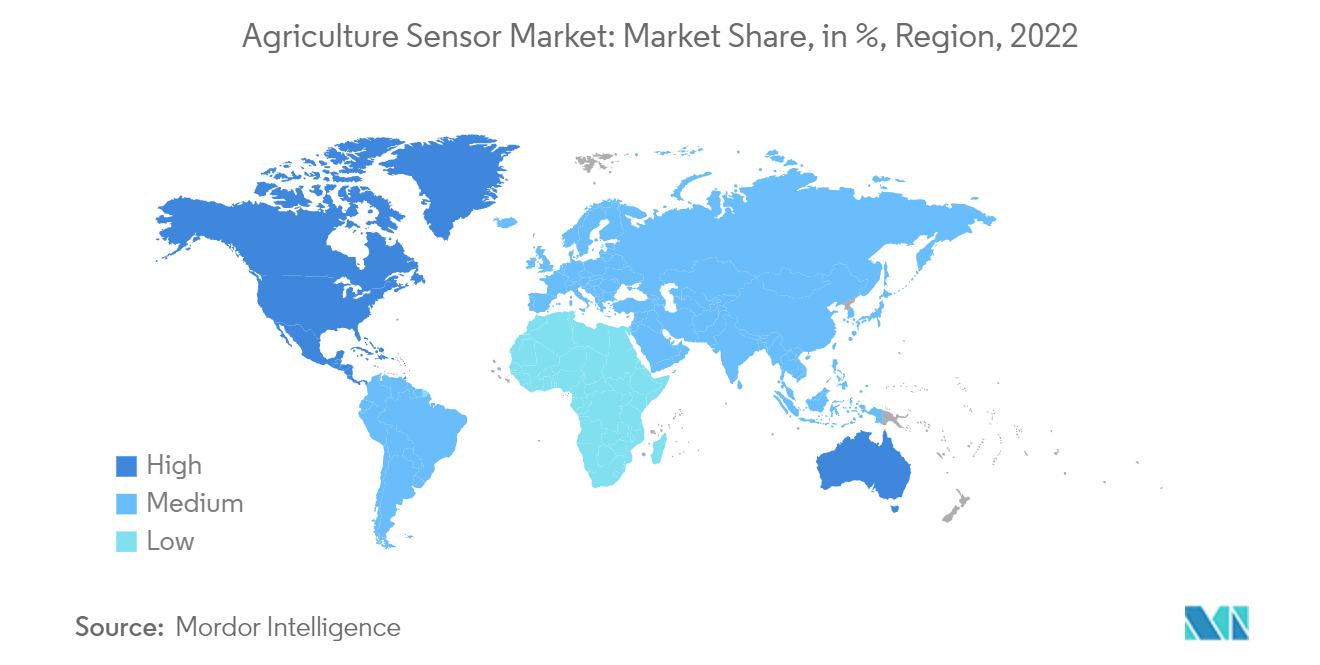Market Trends of Agricultural Sensor Industry
Decreased Number of Labor Requirements
Precision and indoor farming techniques demand new techniques to address the challenges of fluctuating climatic conditions and decreased skilled labor force. The farmer can control light amounts, nutrition levels, and moisture levels when they are growing crops solely indoors. Sensors with small-scale control systems with robust functionality would allow businesses to automate their systems and increase yields in a better way. The post-adoption of sensors may reduce the labor force by around 20.0%. Agricultural sensors can address the labor challenge in indoor farms.
Big industrial indoor farms use sensors that can sense water contamination, pesticide residues, nutrient shortages, disease attacks, etc. The combination of indoor farming and agricultural sensors will likely enhance crops' production capacities, which may drive the agricultural sensors market in the future.
As such, high-technology irrigation tools, such as soil moisture sensors, can help farmers determine the level of water requirement in each area. Smart irrigation applications in IoT-enabled devices can help control and monitor the irrigation equipment to adjust it based on changing requirements. Both represent a wide scope for undertaking precision irrigation in regions with depleted groundwater levels. These factors are likely to drive the market during the forecast period.

North America Dominates the Market
North America is the largest regional market for agricultural sensors. Strong government support to increase agricultural production, availability of infrastructure support, and acceptance of smart and precession farming methods increased the deployment of advanced farming solutions. In North America, the adoption of soil moisture sensors has rapidly increased. Soil moisture instruments are used in the sports turf segment for more efficient monitoring and conversion of turfgrass. Studies indicate that adopting sensors helps farmers minimize drought stress and reduces maintenance and labor costs of protected cultivation by at least 20%.
The United States is the early adopter of precision farming technologies, the primary factor responsible for the region's most significant share in the global market. The US agricultural sector has undergone a groundbreaking revolution regarding adopting smart farming practices in recent years. Although the advent of sensor-based technologies, such as Internet of Things (IoT) cellular devices, gear tooth sensor-based irrigation and fertilization equipment, and valve position sensors, is relatively new in the domain, the country has been witnessing a new-found demand for sensors, primarily due to the increased rate of mechanization and smart agricultural practices adopted by the farmers. A considerable acceptance of modern agriculture methods by Canada is contributing to industry growth.


